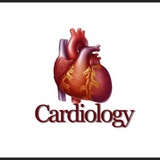💔Acute Myocardial Infarction💔
•
How are stenoses in nonculprit coronary arteries managed in patients undergoing percutaneous coronary intervention (PCI) for ST-segment elevation myocardial infarction (STEMI)?
•
Emergency reperfusion of ischemic myocardium that is in the process of becoming infarcted is the most important advance in the treatment of ST-segment elevation myocardial infarction (STEMI) over the past three decades and is the primary therapeutic goal. With broad application of reperfusion therapy for STEMI, 30-day mortality rates have progressively declined from more than 20% to less than 5%.
@cardiology
•
How are stenoses in nonculprit coronary arteries managed in patients undergoing percutaneous coronary intervention (PCI) for ST-segment elevation myocardial infarction (STEMI)?
•
Emergency reperfusion of ischemic myocardium that is in the process of becoming infarcted is the most important advance in the treatment of ST-segment elevation myocardial infarction (STEMI) over the past three decades and is the primary therapeutic goal. With broad application of reperfusion therapy for STEMI, 30-day mortality rates have progressively declined from more than 20% to less than 5%.
@cardiology
♨️Pericardial Tamponade♨️
.
💠Patient will be complaining of dyspnea and chest pain
💠PE will show muffled heart sounds, JVD and hypotension (Beck’s triad), pulsus paradoxus
💠ECG will show low voltage QRS, electrical alterans
💠Echocardiography will show diastolic collapse of RV
💠Treatment is pericardiocentesis. @cardiology
.
💠Patient will be complaining of dyspnea and chest pain
💠PE will show muffled heart sounds, JVD and hypotension (Beck’s triad), pulsus paradoxus
💠ECG will show low voltage QRS, electrical alterans
💠Echocardiography will show diastolic collapse of RV
💠Treatment is pericardiocentesis. @cardiology
•Atrial Fibrillation•
This is treated with synchronized cardioversion; meds to reduce ventricular response rate such as metoprolol, diltiazem, or digoxin; anticoagulant therapy to reduce risk of clot formation and stroke
.
•Premature Ventricular Contraction•
This is treated if client is symptomatic; advise against using stimulants (caffeine, nicotine); drug therapy includes, class I and III antidysrhythmics and possibly addition of a beta blocker
.
•Ventricular Tachycardia•
This is treated if VT is sustained or if client is symptomatic; treatment includes IV procainamide, lidocaine.
.
•Ventricular Fibrillation•
If unstable, a class III antidysrhythmic and immediate cardioversion; ablation surgery or internal defibrillator for repeated episodes Immediate defibrillation
.
•1° AV Block•. https://www.tg-me.com/cardiology
This is treated with synchronized cardioversion; meds to reduce ventricular response rate such as metoprolol, diltiazem, or digoxin; anticoagulant therapy to reduce risk of clot formation and stroke
.
•Premature Ventricular Contraction•
This is treated if client is symptomatic; advise against using stimulants (caffeine, nicotine); drug therapy includes, class I and III antidysrhythmics and possibly addition of a beta blocker
.
•Ventricular Tachycardia•
This is treated if VT is sustained or if client is symptomatic; treatment includes IV procainamide, lidocaine.
.
•Ventricular Fibrillation•
If unstable, a class III antidysrhythmic and immediate cardioversion; ablation surgery or internal defibrillator for repeated episodes Immediate defibrillation
.
•1° AV Block•. https://www.tg-me.com/cardiology
